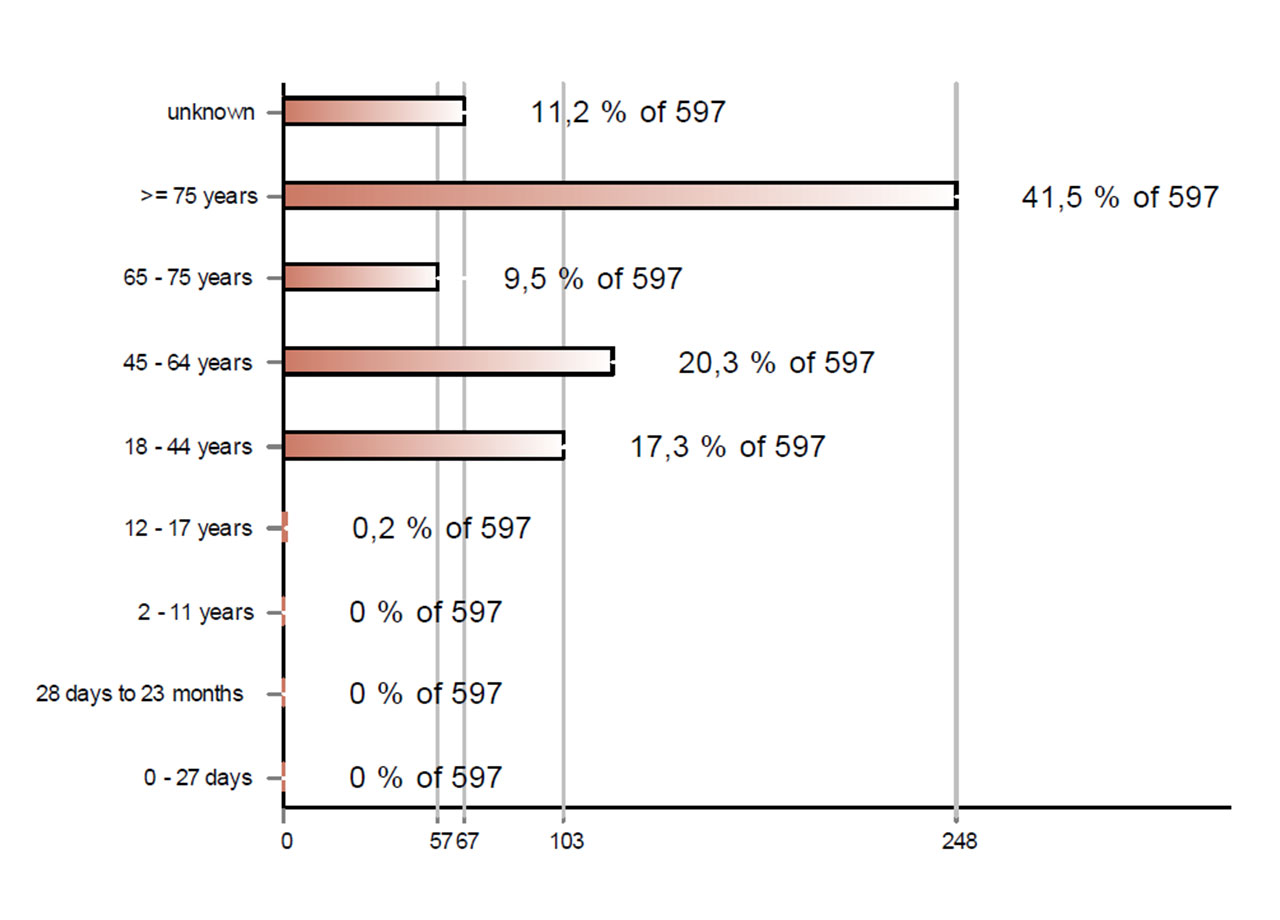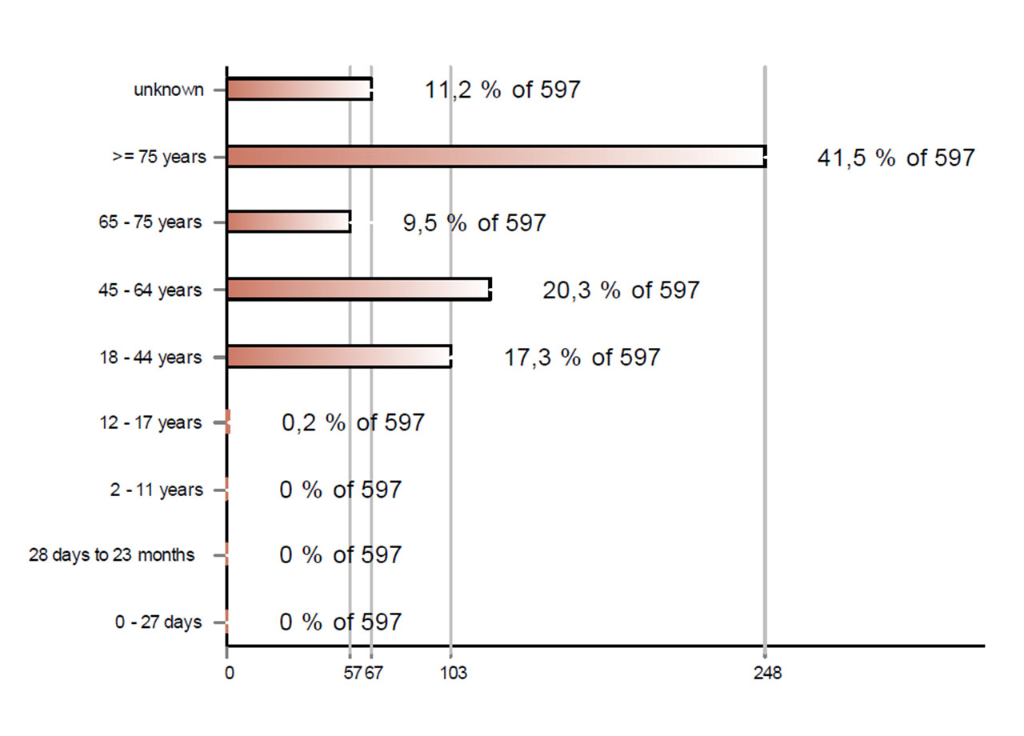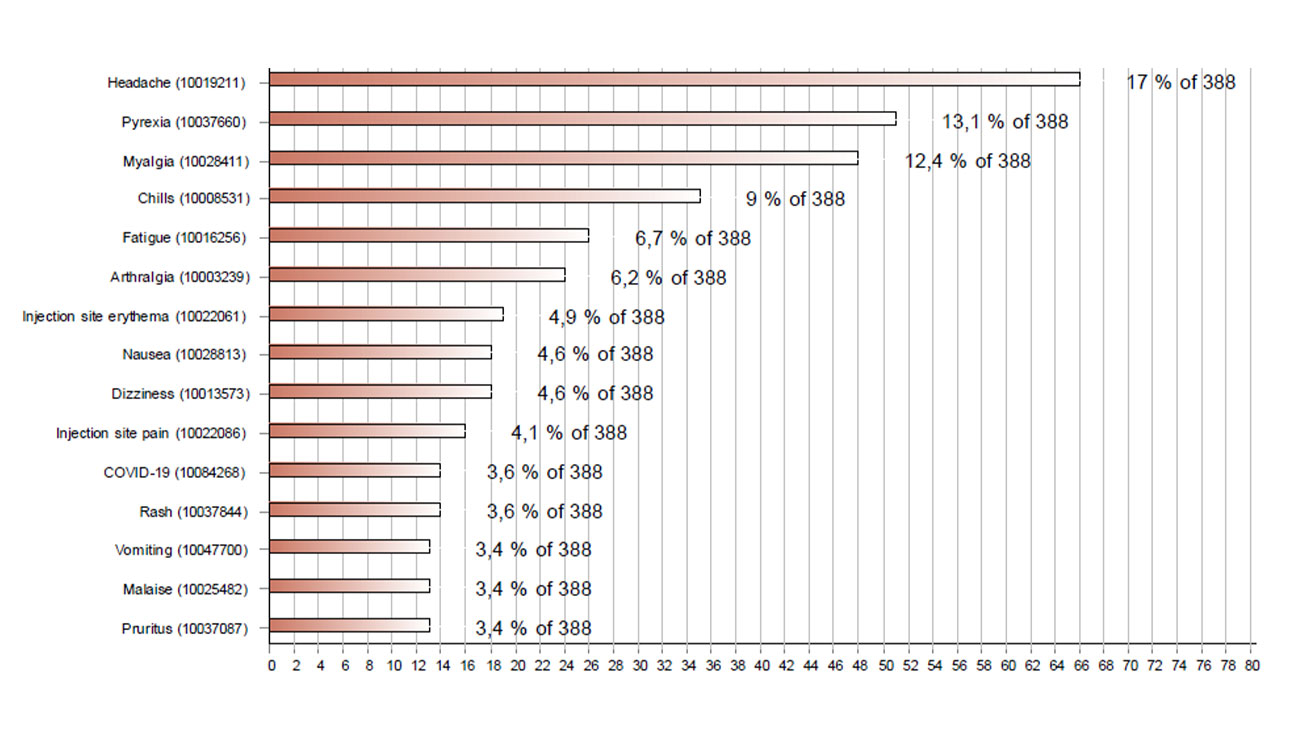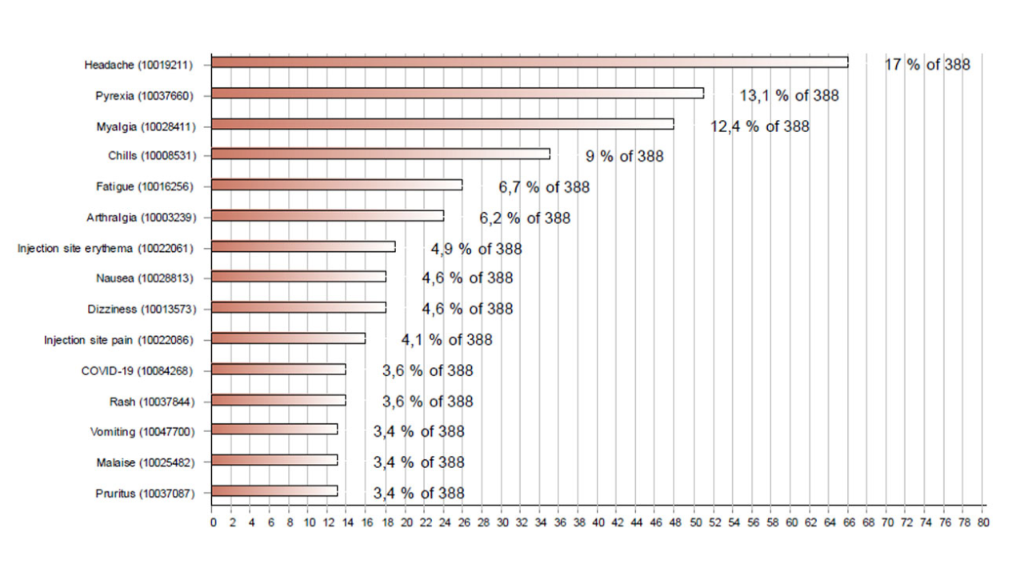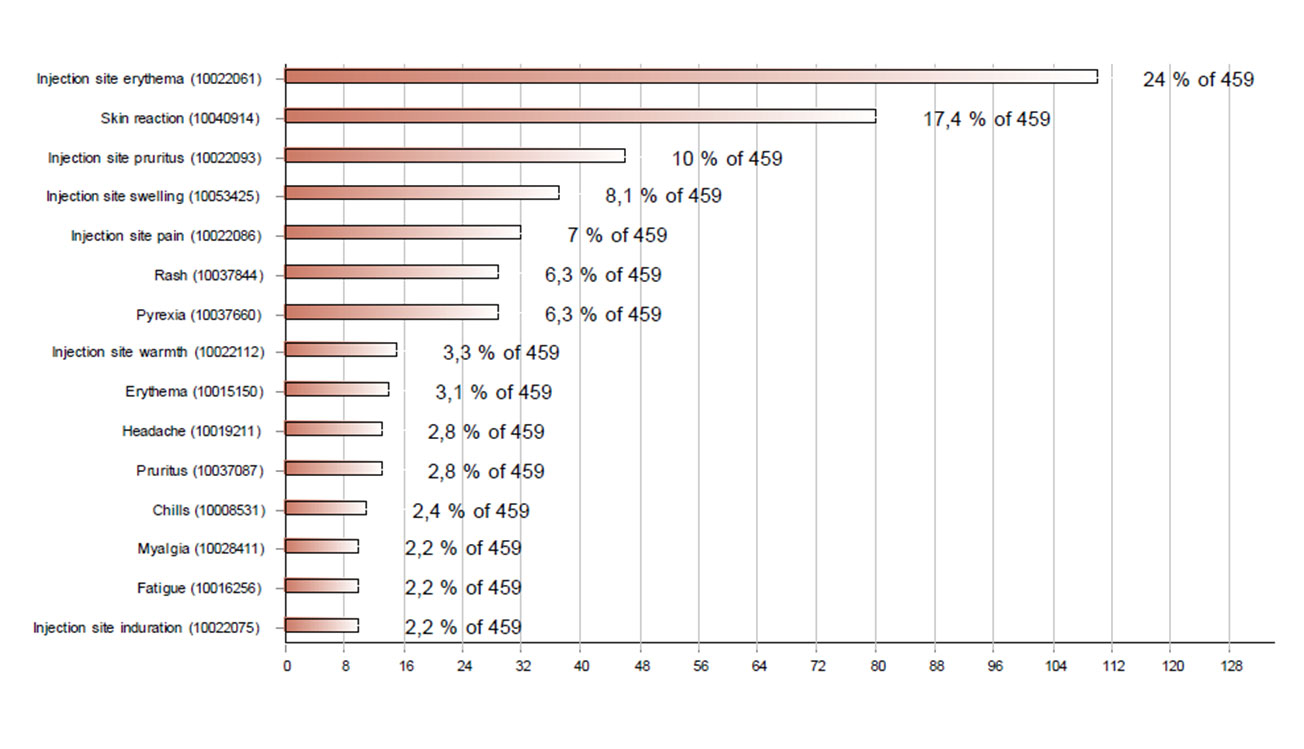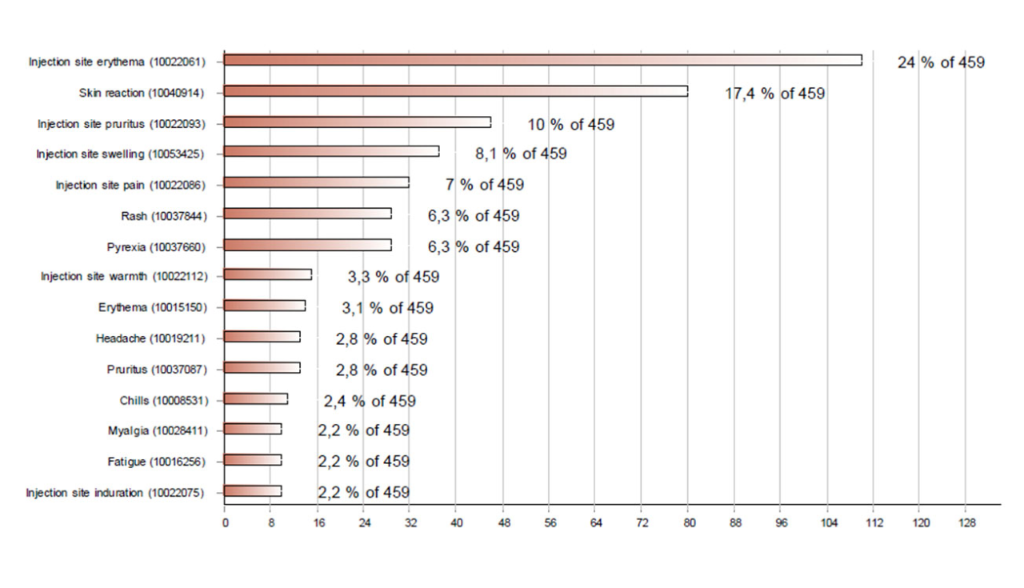As at 8 March 2021, Swissmedic, in collaboration in particular with the EOC reference centre and other regional pharmacovigilance centres, has evaluated 597 reports of suspected adverse drug reactions (ADR) to COVID-19 vaccinations in Switzerland. The reports corroborate the side effects profile identified during the authorisation studies and described in the medicinal product information. There is no evidence to date of any new safety signals, so the positive ratio of benefits to risks of the two authorised vaccines is still the same.
597 reports of suspected adverse reactions to COVID-19 vaccines in Switzerland evaluated
11.03.2021
343 reports involve Pfizer/BioNTech's Comirnaty®, while 251 are associated with Moderna's COVID-19 vaccine. In three cases, the vaccine was not specified. Most of the reports were submitted by medical professionals while 43 (7.2%) came directly from those affected, i.e. the patients.
The majority of the reports concerned women (68.7%). Men were affected in 27.1% of cases, and there were a few cases (4.2%) where no gender was specified. Figure 1 shows the age distribution of the people affected. Of the 248 people aged 75 or over, 124 were between 80 and 89, while 22 were 90 or older.
The majority of the reports (70.4%) were not serious, while 177 (29.6%) were classified as serious. In these latter cases, the people affected were either treated in hospital or their reactions were classified as medically significant for other reasons. In most cases, however, the persons concerned were not in danger. The reactions most commonly reported in the cases classified as serious were fever (24), shortness of breath (18), COVID-19 disease1) (14), vomiting (11), hypersensitivity (11)/anaphylactic reactions (8), headache/migraine (11) and reactivation of shingles (8). Since a single report generally involves more than one reaction, reactions such as fever or headache are reported in cases that are serious overall as well as in non-serious cases.
Figures 2 and 3 respectively show the 15 most frequently reported reactions associated with Comirnaty and Moderna's COVID-19 vaccine.
1) These reports relate to cases of COVID-19 where there was a correlation in time with the vaccination. Since the vaccinated persons had not been tested before they were vaccinated and the human body first needs to build up its protection against the virus, the onset of COVID-19 disease in temporal correlation with vaccination is possible. However, there is no causal link with the vaccination. Unlike live vaccines – e.g. those against measles, mumps and rubella (MMR) – COVID-19 vaccines do not contain (attenuated) viruses and cannot therefore trigger COVID-19 disease.
In 21 of the serious cases, the people concerned died at differing intervals after receiving the vaccine. Their average age was 85, and the majority of them had serious pre-existing conditions. These cases were analysed with particular care. As far as is known at present, death was caused by conditions such as infections, cardiovascular events or diseases of the lungs and airways that occurred independently of the vaccination. Despite a chronological correlation, there is no concrete evidence to suggest that the vaccination was the cause of death. The drug regulatory authorities of other countries and the WHO reached similar conclusions when they evaluated deaths with a temporal link to COVID-19 vaccines.
The reports of adverse reactions received and analysed to date do not change the positive benefit-risk profile of the COVID-19 vaccines. The reports now provide us with a clearer picture of the vaccines’ safety in daily use. This largely confirms their known side effects profile. Known side effects of COVID-19 vaccines are listed in the continually updated medicinal product information texts published on www.swissmedicinfo.ch.
Information on reporting ADR associated with COVID-19 vaccines
Please note: Known, non-serious reactions are not subject to the reporting obligation prescribed by Art. 59 of the Therapeutic Products Act. The known, non-serious and very common reactions to COVID-19 vaccines include transitory pain and swelling at the injection site, fatigue, shivering, fever, headache and muscle and joint pain. These passing local and general reactions are normally a sign of the body dealing with the vaccine.
However, serious or as yet unknown adverse reactions must be reported. At this relatively early stage of the vaccination campaign, doctors should generally report all ADR that they feel are medically relevant. For this purpose they should use the ElViS electronic reporting tool, which they also can log into using their HIN ID.
ElViS has now been further simplified specifically for reports involving COVID-19 vaccines: after log-in, clicking a red button leads directly to a specific report form. When the respective vaccine is selected in this form, some of the fields are prefilled automatically in order to further simplify the reporting process.


